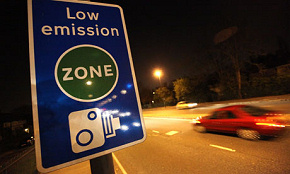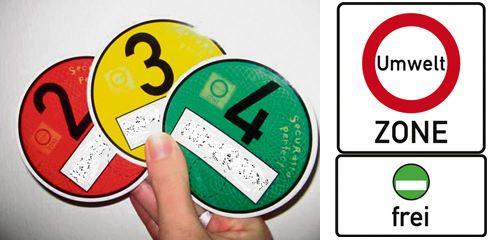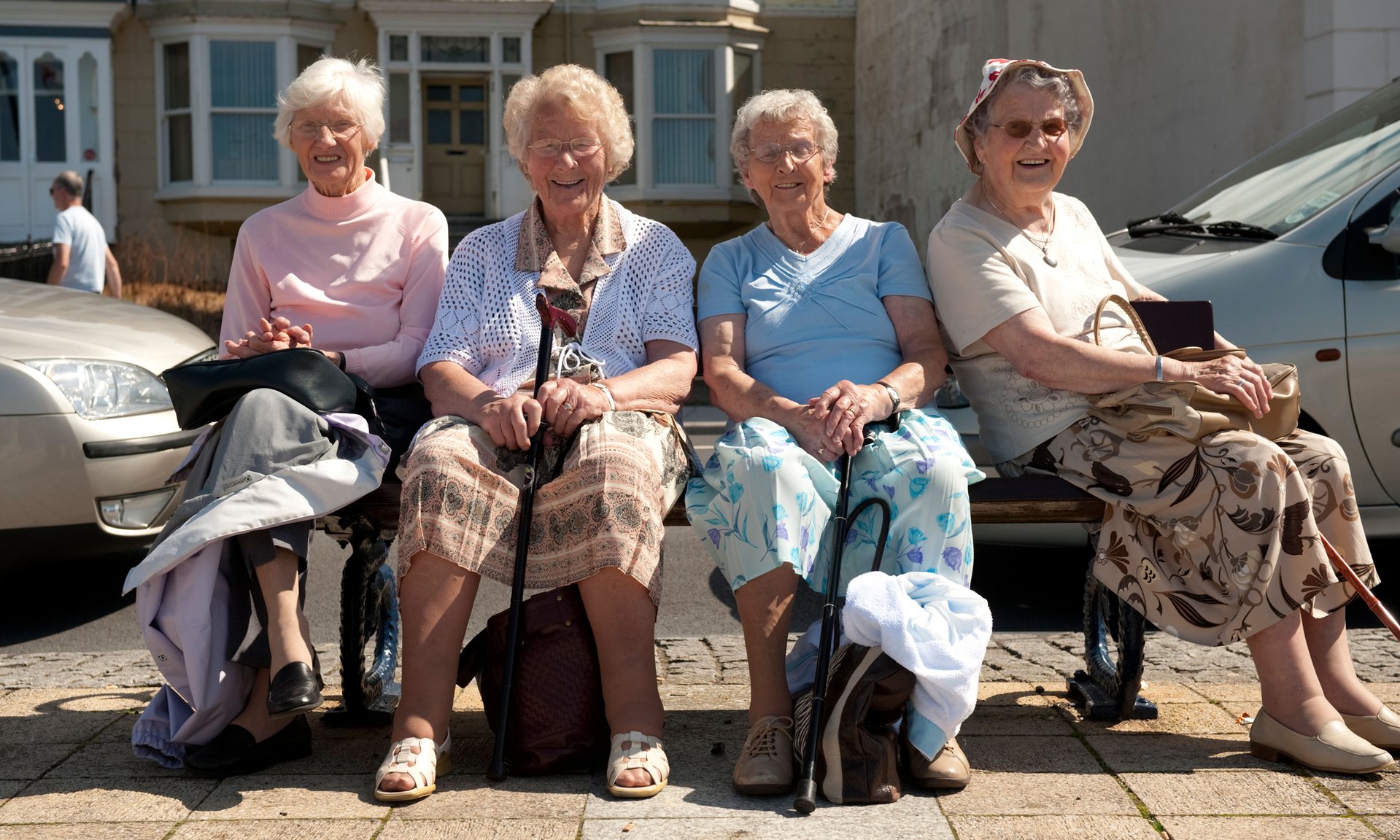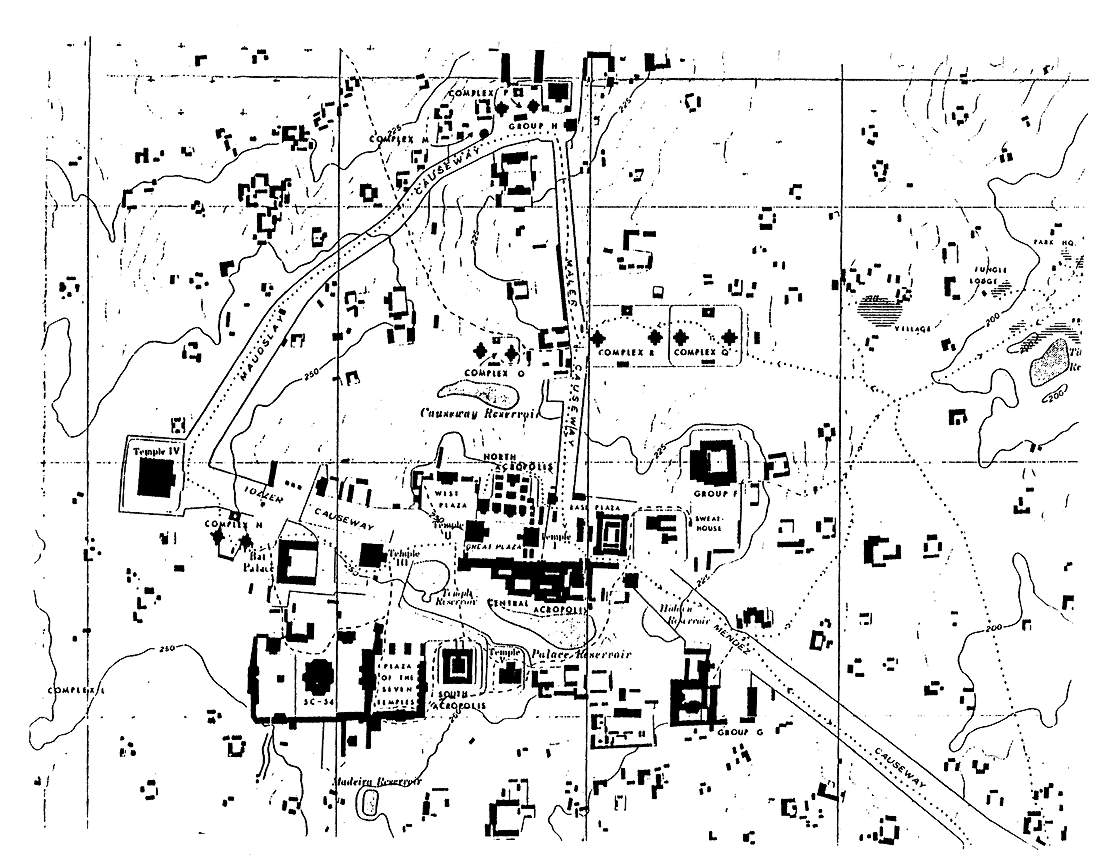In May 2007, the Mayor of London, Ken Livingstone, announced that the city would be implementing a city-wide low-emission zone (LEZ) that would take effect in February of 2008. The initial plan was to use cameras to photograph license plates of trucks and buses to check whether or not they met European emission standards. Any vehicles found to be in violation would receive a £200 (~$331) fine.
The City of London decided to take this seemingly drastic action – which, of course, got significant resistance from truckers associations – because of increasing warnings over the levels of air pollution in the city which frequently exceeded EU standards. The goal of the program was to phase it in over a four year period with the hopes of reducing emissions by 16% by 2012, resulting in improvements to overall health and quality of life for London residents.
The LEZ implementation in London came around the same time that similar (and often further reaching) schemes were being introduced throughout Europe. In Germany, for example, LEZs were put in place starting in 2008 in Berlin, Cologne, Hanover, Mannheim, and Stuttgart. LEZs have since spread across Europe with about 390 existing as of the end of 2013. Outside of Europe, Tokyo has an LEZ, but none have as yet been setup in any other developed country, including the U.S.
While most Americans may think of LEZ-style restrictions as being too strong and unnecessary, perhaps it is time that they reconsider. In addition to the growing concerns about automobile emissions and climate change, these emissions have also been linked to dramatic health impacts. The World Health Organization recently labeled air pollution as a leading cause of cancer. In addition, researchers at MIT recently released a study that showed that motor vehicle emissions caused about 53,000 premature deaths – 30% more than motor vehicle crashes – in the U.S. in 2005, making motor vehicle emissions one of the leading causes of death in the nation.
From our partners:
Some of the worst health impacts from automobile emissions come from so-called particle pollution. According to the American Lung Association’s State of the Air Report, particle pollution is a mix of very tiny solid and liquid particles in the air. It comes from burning fossil fuels in factories, power plants, and diesel- and gasoline-powered motor vehicles. Particle pollution can increase the risk of heart disease, lung cancer, and asthma attacks and can interfere with the growth and work of the lungs.
The State of the Air website lists the most polluted cities in the U.S., including some cities, such as Portland (pictured below) and Seattle, which are often listed as being among the nation’s most livable.
You may think it unlikely that automobiles could produce that much pollution and that the majority of it must be coming from industry. Not so, “according to the Environmental Protection Agency, motor vehicles produce roughly one-half of pollutants like VOCs, nitrogen oxide and particulate matter. Seventy-five percent of carbon monoxide emissions come from automobiles. In urban areas, harmful automotive emissions are responsible for anywhere between 50 and 90 percent of air pollution.”
If those scary facts have you convinced, let’s look a little closer at what exactly an LEZ is and how it can be implemented. An LEZ is a geographically defined area – usually in a downtown or sometimes an entire city – that restricts or deters access by certain polluting vehicles to improve air quality, reduce noise, and improve health. To implement an LEZ, a number of things would need to happen:
- The city would need to figure out what the system would be to setup and enforce an LEZ. In Germany, for example, they use a system of colored stickers (pictured below) for motor vehicles that correspond to the amount of emissions from that vehicle and what areas of the city it is allowed to enter. These stickers work in conjunction with street signage (pictured below) that indicates the zone you are entering and which types of vehicles are allowed.
- To enforce the LEZ in Germany, they issue $50 tickets if you are in the wrong zone. As mentioned earlier, in London, they use cameras to check license plates and they issue tickets for violations, depending on vehicle type.
The city will also need to define the vehicle types that are affected. They may want to start with trucks and then move to cars. - The city would need to develop a marketing and education campaign to help the public understand how the system will work.
They will also need to make sure that incentives are put in place to encourage people to use public transit or clean up their vehicle emissions by retrofitting or purchasing new low-emission cars. - They will need to couple the LEZ with additional policies such as congestion pricing, anti-idling laws, and new ways to transport freight using distribution hubs, streetcars, smaller trucks, and bikes.
- Finally, the city will need to define the boundaries of the LEZ and determine how the program will be phased in over time.
As cities continue to add more and more residents into their downtowns, it is crucial that they do everything they can to make their cities as healthy, livable, and family friendly as they can. Putting low-emission zones in place in cities across the U.S. as they have already done in Europe will greatly help to further tame the automobile and to make cities the best places for people to live.
This feature is adopted from Livable Cities.

















